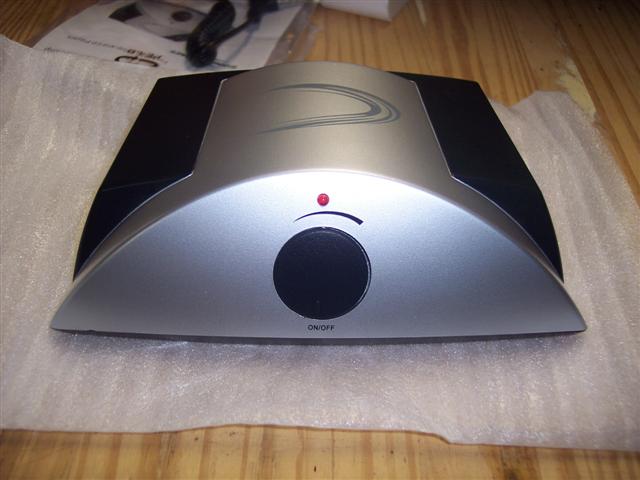

|
This page details the modifications I've made to a Sonic Impact T-Amp. This is an amplifier based on the Tripath TA2024 amplifer chip starting with Sonic Impact's implementation. Before I opened the case, I hooked it up and listened to it. It's not that good, and I must admit that I was really skeptical about what I'd be able to accomplish by re-casing, adding, removing and changing components. Right out of the box, it's got a lot of hiss. Just hook it up to a pair of cheap speakers --- sssssssss --- and that's with nothing on the input and the volume down. Turn it up --- SSSSSSSS! Ignoring that, the reports of no bass reponse are right. Out of the box, my cheap no-name computer speaker amp beats it. What you see below is what you get when you open the SI T-amp. Thin wire galore. Kinda a small space. Below is what I cobbled together. I'm using some cardas RCAs, Solen caps on the input and AudioCaps on the output. Aluminum enclosure. Most of the mods that I performed are detailed on the Michael Mardis site. I went for the "version 3 stealth" mod. I didn't stop there. I also replaced the DC input capacitor with a 2200uF Panasonic FC-series cap, and replaced the inductors with the values spec'ed by Tripath (10uH) in a J.W. Miller part, and the added a Panasonic log-taper 50K potentiometer for the volume. The wire has been replaced by multiple strands of silver-teflon in a Litz braid. The chip runs cool when under load - so I abandoned my plans to heatsink it any further. In this picture, you can see the board is secured by a standoff to the back plate. It's all a tight fit, but not too bad. I'm happy with the aluminum case, sourced from Parts Express. Now I just need a good volume knob. The case is all aluminum, including the backplates, so doing the necessary machining is not too difficult with a drillpress and XY sliding vice. But that's not it. On the first power-up, I had +12V coming from one of the channels. Glad my voltmeter found that first. In the process of inspecting the board for what might be wrong, I found another inductor/capacitor pair on the input path. Tripath doesn't spec that, and the Mardis site didn't have me removing that. So, I removed another SMD capacitor and inductor pair on the input circuitry that was in a low-pass configuration. I don't know what the cutoff frequency would be, but I'm pretty sure I don't need it. How's it sound? A LOT better. The hiss is all gone. Turn it all the way up with no input -- and you hear nothing. The bass response is back, too. All-in-all, it sounds pretty good for a weekend's work. This page last modified Sun Jun 4 22:14:20 CDT 2006 by timc! |